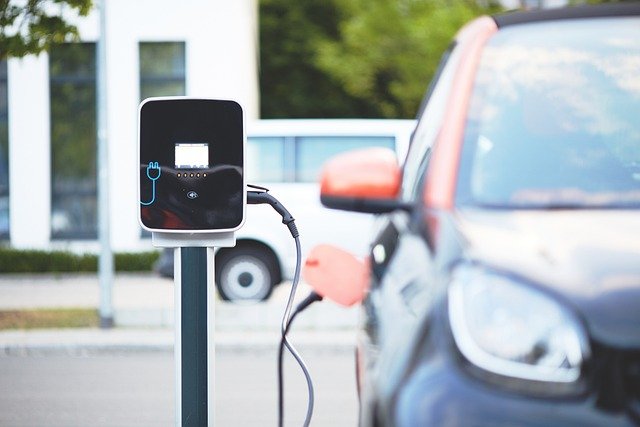Harnessing the Power of Supercapacitors in Automotive Engineering
The automotive industry stands on the cusp of a revolutionary shift in energy storage and power delivery. Supercapacitors, once relegated to niche applications, are now poised to transform how we think about vehicle performance, efficiency, and sustainability. This cutting-edge technology promises to address longstanding challenges in automotive engineering, offering a glimpse into a future where cars are not only faster and more responsive but also more environmentally friendly.

The key to a supercapacitor’s performance lies in its electrode material. Most modern supercapacitors use activated carbon, which provides an enormous surface area for charge storage. Recent advancements have explored the use of graphene and carbon nanotubes, promising even greater energy densities and faster charge times. These materials, combined with innovative electrolyte solutions, are pushing the boundaries of what’s possible in energy storage.
Supercapacitors vs. Batteries: A New Paradigm
While batteries have long been the go-to solution for energy storage in vehicles, supercapacitors offer several distinct advantages. First and foremost is their ability to charge and discharge rapidly without degradation. This characteristic makes them ideal for regenerative braking systems, where energy is captured during deceleration and quickly released during acceleration. Unlike batteries, which can suffer from reduced performance and lifespan due to repeated deep discharges, supercapacitors can undergo millions of charge-discharge cycles with minimal impact on their capacity.
Another significant advantage is power density. Supercapacitors can deliver bursts of power far exceeding what’s possible with batteries of similar size. This capability translates to improved acceleration and overall vehicle responsiveness. Moreover, supercapacitors perform well across a wide temperature range, maintaining their efficiency in conditions that would significantly impact battery performance.
Integration Challenges and Solutions
Despite their promising characteristics, integrating supercapacitors into automotive systems presents several challenges. One of the primary hurdles is their relatively low energy density compared to batteries. This limitation means that supercapacitors alone cannot provide the long-term energy storage required for extended vehicle operation. However, engineers are developing innovative hybrid systems that combine the high power density of supercapacitors with the high energy density of batteries.
These hybrid systems leverage the strengths of both technologies. Supercapacitors handle the high-power, short-duration demands such as acceleration and regenerative braking, while batteries provide sustained energy for long-distance travel. This approach not only improves overall vehicle performance but also extends battery life by reducing the stress of rapid charge and discharge cycles.
Another challenge lies in the electrical systems required to manage the high currents associated with supercapacitors. Automotive engineers are developing sophisticated power electronics and control systems to efficiently distribute power between supercapacitors, batteries, and the vehicle’s drivetrain. These systems must be robust, reliable, and capable of handling the unique characteristics of supercapacitor-based energy storage.
Real-World Applications and Future Prospects
Several automotive manufacturers are already exploring the potential of supercapacitors. In motorsports, where rapid energy delivery is crucial, supercapacitors have found a natural home. Formula 1 cars, for instance, use a Kinetic Energy Recovery System (KERS) that incorporates supercapacitors to capture and release energy during braking and acceleration, providing a significant performance boost.
In the consumer market, some luxury sports cars have begun integrating supercapacitor technology to enhance acceleration and improve fuel efficiency. As the technology matures and costs decrease, we can expect to see wider adoption across various vehicle classes. Public transportation is another sector ripe for supercapacitor integration, with some cities already testing buses that use supercapacitors for rapid charging at stops.
Looking to the future, the potential applications of supercapacitors in automotive engineering are vast. As research continues to improve energy density and reduce costs, we may see vehicles that rely increasingly on supercapacitors for their primary energy storage needs. This shift could lead to cars with ultra-fast charging capabilities, eliminating one of the major barriers to widespread adoption of alternative fuel vehicles.
Environmental Impact and Sustainability
The environmental implications of supercapacitor technology in automotive applications are significant. By improving the efficiency of regenerative braking systems and enabling more effective use of intermittent energy sources, supercapacitors can contribute to reduced fuel consumption and lower emissions. Additionally, the materials used in supercapacitors are generally more environmentally friendly and easier to recycle than those found in traditional batteries.
As the automotive industry continues its push towards sustainability, supercapacitors offer a promising path forward. Their long lifespan and minimal degradation mean fewer replacements over a vehicle’s lifetime, reducing waste and resource consumption. Furthermore, their ability to rapidly capture and release energy makes them ideal for integrating renewable energy sources into vehicle power systems, paving the way for truly sustainable transportation solutions.
In conclusion, supercapacitors represent a transformative technology in automotive engineering. As research progresses and integration challenges are overcome, we can expect to see vehicles that are not only more powerful and responsive but also more efficient and environmentally friendly. The journey towards widespread adoption of supercapacitors in automotive applications is just beginning, but the potential benefits for performance, sustainability, and the overall driving experience are truly exciting. The future of automotive technology is charged with possibility, and supercapacitors are at the forefront of this electrifying revolution.





